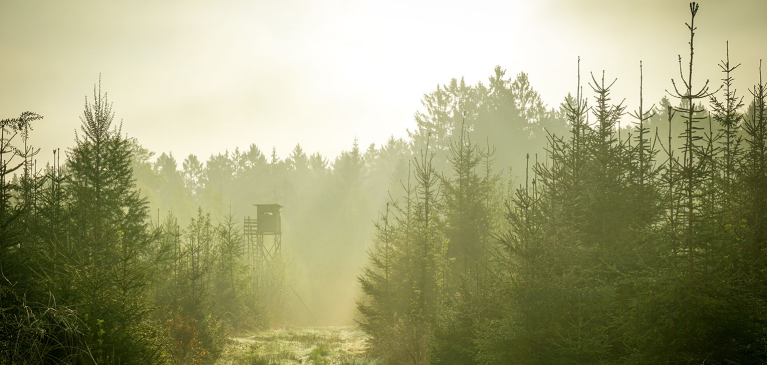
Regular firearm hunting season is rapidly approaching for both Michigan and Wisconsin hunters. Before the season begins, consider using this quiet time to evaluate your property and land improvement tactics to get your hunting land in tip-top shape.
There are four things to keep in mind with hunting land management to harvest the perfect buck: food source, water source, proper coverage, and keeping the correct ratio between does and bucks.
Providing Adequate Food and Water Sources
In order to maintain wildlife, just like you and I, they need to eat! Some land might not naturally provide the right mix of food options for the wildlife you want to attract. However, you can grow this food yourself on a food plot.
Adding different foods to your food plot will attract different types of animals. If you’re hunting deer, consider growing things like barley or rye.
These days, you don’t need any fancy tools or tractors – many manufacturers produce seeds you can throw down, and they’ll grow into a garden for your wildlife with little to no extra work needed from you.
If a pond or lake doesn’t already exist on your hunting property, you will need to create a source of water for wildlife.
Low-lying patches of land can be dug deeper to create an area for water to fill. You could also install a liner in these areas to make sure they remain puddles of water for your wildlife.
Creating Shelter for Your Wildlife
Animals need a place to hide and sleep. For their own protection, deer will not typically settle down in an open field space.
Evergreens and trees are good additions to provide more coverage on your land. If your land already has trees, you may even consider knocking some over, so the deer have more places to hide.
Another option for open spaces is to allow your fields to grow plenty of weeds and grass to act as coverage for wildlife.
Maintaining Your Buck to Doe Ratio
While the goal is to attract wildlife, having a population too big is equally problematic. For deer, you’ll want to try to keep the ratio of does and bucks close to 50/50, if possible. Too many deer mean a lower food supply, and the bucks won’t stay.
If one of your goals is to be rewarded with a trophy buck, you may want to consider deer management practices, such as only harvesting deer of a certain size to allow younger bucks to mature.
When sharing your hunting land with other people, talk with them ahead of time about your expectations for the land, and what wildlife should and should not be harvested.
Getting Started with Managing Your Land
How you will manage your hunting land should be considered early in the year, well before hunting season begins. This will ensure your property is ready and the animals are comfortable, so you can enjoy a successful hunting season. It is also important to reevaluate your practices each season to determine what worked and what didn’t work, to know what is best for the wildlife’s health and population on your land.
There are plenty of perks to owning your own hunting land. If you haven’t made the purchase, you might consider these benefits for future ownership. Learn about a few of the benefits of recreational land ownership in this resource here.
Our recreational land experts are here to walk you through the land buying process. Get started by checking out these frequently asked questions or contacting your nearest branch.


